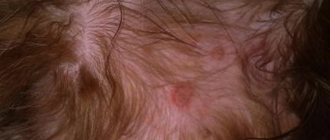Not all owners, upon discovering that their dog’s eyes are festering, begin to worry. Especially if the animal seems healthy and full of energy. However, in most situations this is a sign of a serious illness and cannot be avoided without the assistance of a veterinarian.
Pus is considered a thick, opaque liquid. The shade can be:
- yellowish;
- greenish;
- grey.
The owner should know that when suppuration occurs, we are talking about pathogenic flora, which puts a serious burden on the immune system. In such a situation, harmful bacteria multiply in the animal’s conjunctival cavity. The walls of blood vessels become wide under the influence of toxins. As a result, plasma and leukocytes leak into this cavity, and pus is formed. There are various reasons why discharge from the eyes may occur.
Causes
Various reasons can provoke the appearance of purulent exudate. Similar symptoms are observed under environmental influences.
Irritation caused by external factors
Purulent discharge is often observed when the cornea comes into contact with caustic substances, for example, household chemicals. The problem also occurs when particles of dust, smoke or sand come into contact with the mucous membranes.
Development of allergies
When contacting aggressive substances and introducing potential allergens into the diet, there is a risk of developing a reaction in the body. First, there is profuse lacrimation, then the whites of the eyes turn red and pus appears.
Other changes may also be noted:
swelling of paw pads, lips and nose;- itching;
- frequent, prolonged sneezing;
- bronchospasms;
- pulmonary edema.
This is an extremely dangerous condition. It cannot be ignored.
Injury to the organ of vision
Dogs are not immune to all kinds of surprises.
The mucous membranes may be injured by branches, damaged during games or when communicating with a cat.
In this case, only one eye is affected, but when you hit your head, pus appears immediately from both.
Parasites: ticks, fleas, helminths
An animal can be affected by various parasites: ticks, helminths or fleas.
They can cause suppuration of the eyes. This is due to the development of allergies when helminths enter the organs of vision. Dogs are constantly itching and can accidentally hurt their eyes.
Fungal infections
Diseases affect the entire body or manifest locally. There are no single symptoms to identify them. Depending on the pathogenic pathogen, various clinical manifestations are observed.
Fungi can stay in the body for years without showing themselves. At a certain period, when the immune system weakens, severe symptoms begin to occur.
Viral diseases
The appearance of purulent exudate in both a newborn puppy and an old dog is often observed during viral infection. Similar changes are provoked by hepatitis, adenovirus and plague. Each pathology has its own characteristics that cannot be ignored.
The following symptoms may be observed:
- refusal to eat;
hyperthermia;- wheezing;
- labored breathing;
- cough;
- sneezing;
- diarrhea;
- vomit.
Conjunctivitis
With infectious conjunctivitis, pus is discharged. Such changes often indicate abnormal development of the lacrimal duct and immunosuppression.
Chronic pathologies
Suppuration of the eyes is often provoked by diseases that occur in a chronic form.
This may be a blockage of the tear ducts, an inversion of the eyelid, or diseases of the internal organs. Often problems are observed in the genitourinary system, kidneys and gastrointestinal tract.
Is it possible to do diagnostics at home?
It is impossible to identify the exact cause of suppuration at home.
For this purpose, a comprehensive diagnosis is carried out, so if symptoms appear, you need to contact a veterinary clinic.
Consequences of ignoring the problem
Such changes cannot be ignored. The consequences of neglect can be very dire, for example, complete loss of vision for a pet. When infected by viruses, the risk of death is high.
Allergies and bacteria
Any type of allergy can lead to purulent discharge from a dog's eyes. This could be an allergy to:
- Food;
- pollen;
- household chemicals;
- drops against ticks;
- new collar and much more.
In such cases, the first thing that happens is constant, profuse tear production. Humidity and heat lead to the proliferation of microbes. The immune system fails and is unable to contain their increase. As a result, instead of tears, the dog’s eyes fester. With a strong reaction to the allergen, other symptoms appear - the nose and lips may swell, and itching may occur.
The causes of pus sometimes lie in fungi and bacteria. If the infection is the basis for suppuration, then the symptoms vary:
- mild conjunctivitis;
- elevated temperature;
- loss of appetite;
- sepsis.
Alarming symptoms that require you to contact your veterinarian
If your pet has mild itching and excessive lacrimation, the symptoms do not cause any particular concern.
The animal is treated at home by washing the eyes. After a few days the condition stabilizes. There are a number of signs that indicate the need to urgently contact a veterinarian.
Redness on the eyelid, severe itching and pus
If the eyelids become very red, there is irritation of the eyeball, the dog suffers from excessive itching and copious discharge of pus, then it must be seen by a doctor.
Swelling of the eyes with discharge
Severe swelling of the visual organs causes concern. A doctor's consultation is needed if the exudate is green, reddish, yellowish or gray.
Purulent crusts
In this case, you need to seek help from a veterinary clinic. Such formations are observed in advanced cases.
What to do if your dog has a swollen eye
Specific medications and the owner's actions to provide first aid to their pet depend on the cause of the swollen eye. General manipulations that are suitable for any disease or injury:
- prohibit the dog from touching and rubbing its eyes. If possible, put a collar on the animal.
- Rinse the swollen eye with cool boiled water.
- relieve the main signs of inflammation with a cold compress. The blood vessels will narrow and the swelling will go away.
- If the owner is sure that the cause is an allergic reaction, then the dog must be given an antihistamine. You can use the medications that people take - suprastin, diazolin, loratadine and others.
- Tetracycline ointment, which should be applied behind the swollen eyelid, will bring relief to the dog.
After providing first aid to the dog, it must be shown to a veterinarian for diagnosis and treatment.
Helping the animal with the first discharge
If pus is detected in the eyes of your pet, you need to provide first aid.
Washing with furatsilin
First of all, the animal needs to rinse its eyes with furatsilin and remove the purulent exudate. The solution is prepared using a glass of warm water and one tablet of the drug.
Host actions:
A cotton swab is moistened in the prepared solution.- The eyelids are wiped.
- A different swab is used for the second eye.
You need to treat your eyes three times a day.
Tetracycline ointment: how to apply correctly
1% tetracycline ointment is used. A more concentrated product cannot be used, otherwise a burn will occur.
The ointment is applied under the lower eyelid as follows:
The eyelid is pulled back a little.- A small amount of the product is taken.
- The ointment is carefully applied under the eyelid using precise movements.
- Closed eyes are massaged with smooth movements.
It is important that the animal does not rub its eyes with its paws.
Visit to the veterinarian
After providing first aid to the animal, you need to contact a veterinarian. The specialist will perform a diagnosis and give recommendations related to further therapy.
How are purulent discharge in dogs treated?
If a dog’s eye is festered or both organs are festered at once, then before treating them, contact a veterinarian, who will determine why this happened and prescribe the necessary treatment.
After a thorough diagnosis, the doctor makes a verdict, based on the cause of suppuration:
- Allergies and bacteria. The dog is prescribed antihistamines and put on a hypoallergenic diet using veterinary food.
- Viruses and parasites. When the eyes fester due to infections or parasites, therapy is aimed at destroying the pathogen. The pet is given anthelmintics, acaricidal drugs or powerful antibiotics. In parallel, symptomatic treatment is used.
- Entry of a foreign body or injury. In such a situation, the veterinarian removes the stuck object, inspects the existing injuries and prescribes healing ointments. The use of human drugs is allowed only as prescribed by a doctor. Incorrect dosages can cause chemical burns to the mucous membrane.
- Chronic diseases. The pet needs a detailed examination of all internal organs. To stimulate immune cells, immunomodulators and regular vitamins are used.
- Irritation. After determining the cause of irritation, the owner must limit the pet's contact with harmful substances.
The list of the most popular eye drops includes:
- Leopard, which has an antimicrobial effect;
- Anandin, which relieves inflammation and accelerates healing;
- Tsiprovet, which has anti-inflammatory and antimicrobial effects.
Pet treatment
There is no single correct treatment strategy. It is selected on an individual basis.
Examination in a clinic setting
The veterinarian examines the medical history and interviews the animal’s owner to find out the dog’s current condition.
After this, a series of clinical studies are prescribed to determine the causes of inflammation.
The choice of therapy depending on the identified pathogen
Treatment is prescribed only after determining the provoking factors. Treatment tactics depend on the disease. Various techniques are used.
General and local treatment
Therapy is carried out in two directions: it is necessary not only to stabilize the general condition of the pet, but also to eliminate purulent discharge.
When viruses are detected
If pathogenic pathogens are detected in the animal’s body, antiviral agents are prescribed. They are administered intravenously or intramuscularly.
Medicines and their dosage are selected individually, taking into account the weight of the dog and the specific pathogen.
If your eyes are injured
If the problem occurs due to a foreign body getting into the eye or injury, drops are prescribed.
They promote wound healing. Sometimes it is necessary to remove a foreign object. This procedure is performed in a hospital. In difficult cases, such manipulations are performed under anesthesia.
For allergic reactions
If allergies develop, antihistamines are prescribed.
With their help, it is possible to eliminate negative manifestations and normalize the animal’s condition.
Herbal baths and rinsing with healing solutions
In parallel with the use of medications, herbal medicine is prescribed. To weaken pathological reactions, herbs are used, for example, St. John's wort, calendula, chamomile or herbal tea.
Baths are performed with decoctions of medicinal plants, and the affected mucous membranes are washed.
Treatment
Before starting treatment, it is necessary to assess the animal’s condition, and if you suspect any disease, you should contact a veterinarian. Before prescribing treatment, the veterinarian, after examining the animal and clarifying some facts, including the duration of the discharge, the breed of the dog, makes a diagnosis, according to which he prescribes treatment. It should be noted that some breeds of dogs, for example pugs, Pekingese, bulldogs, hounds, St. Bernards, are predisposed to certain eye diseases due to the special structure of the head, the presence of skin folds on the muzzle, the purpose of the breed, for example, hunting dogs suffer from dust and grass in eyes when crossing the forest thicket.
For eye infections, drops and solutions are prescribed, and in the presence of a foreign body, medications are prescribed to cleanse the eyeball.
Any discharge that appears must be removed, because... Mucus contains bacteria that constantly multiply. Even if you have to visit the veterinarian, removing the mucus yourself will alleviate the animal’s condition. First aid is to wash the eyes. To do this, use a solution of furatsilin (1 tablet per glass of water) or an infusion of chamomile (30 grams per glass of water), which have an anti-inflammatory effect. Warm water is used. The eyes should be washed with a cotton swab or bandage (not cotton wool, as cotton wool fibers may remain in the eye), rubbing the eyes with light movements. A clean swab is used for each eye. You cannot use one tampon on both eyes, otherwise the risk of transferring infection from one eye to the other increases. After completing the procedure, blot the eyes with a clean soft cloth to remove excess moisture. This procedure not only alleviates the pet’s condition, but also helps eliminate dust from the eyes and heal wounds, for example on the eyelid.
The dog's eyes are festering - what to do in this case? Discharge that forms in the eyes of dogs can be attributed to a symptom of certain diseases. There is a purulent, mucous discharge.
Festering eyes indicate that an eye or other disease is developing. Let's find out the causes of festering eyes. How to treat if your eyes are watery and very festered.
The owner is satisfied and happy when his dog is healthy and cheerful. But then he notices the dog is unwell.
What to do in such a situation? The principle of a responsible owner is this: if the dog looks unhealthy, it should be taken to a veterinary clinic immediately.
This rule must always be followed, but the owner will feel calmer if, even before visiting the doctor, he knows approximately what is happening to his pet. Today we will talk about the misfortune of festering eyes.
In addition to purulent discharge, lacrimal exudate may come out of the eyes. At the initial stage, it is important to figure out what kind of discharge is bothering the dog. The exudate is clear and liquid; it represents oxidized tears.
The purulent mass has a characteristic gray, yellowish or greenish tint. It has a dense, thick consistency.
Prevention measures
To avoid such problems, you should follow these recommendations:
Vaccinate your animal in a timely manner;- use antiparasitic agents quarterly;
- monitor the dog’s diet: the menu should not contain potential allergens, balanced food is selected;
- examine your pet’s eyes daily, clean them of dried crusts;
- for animals with bulging eyes, regularly instill artificial tear preparations;
- trim long hair in the eyelid area;
- Wash your pet regularly and clean its bedding;
- walk with the dog in safe places where there is no risk of attacks by cats and fights with other dogs;
- If there are any negative changes in the animal’s condition, seek help from a veterinarian.
Pus in a dog's ear
A fairly common occurrence is the appearance of pus in a dog’s ear. It is usually accompanied by redness and itching, and most often indicates otitis media. It can be caused by parasites - ear mites in a dog or an allergy (to fleas, food, dust or household chemicals). To clarify the diagnosis, it is necessary to take a swab from the ear.
It will clarify the nature of otitis: is it bacterial, tick-borne or fungal. However, there are modern remedies that help with any type of otitis media. First of all, the ears must be washed with saline solution and instilled with drops:
- Ottinum,
- Ottipax,
- Sofradex.











